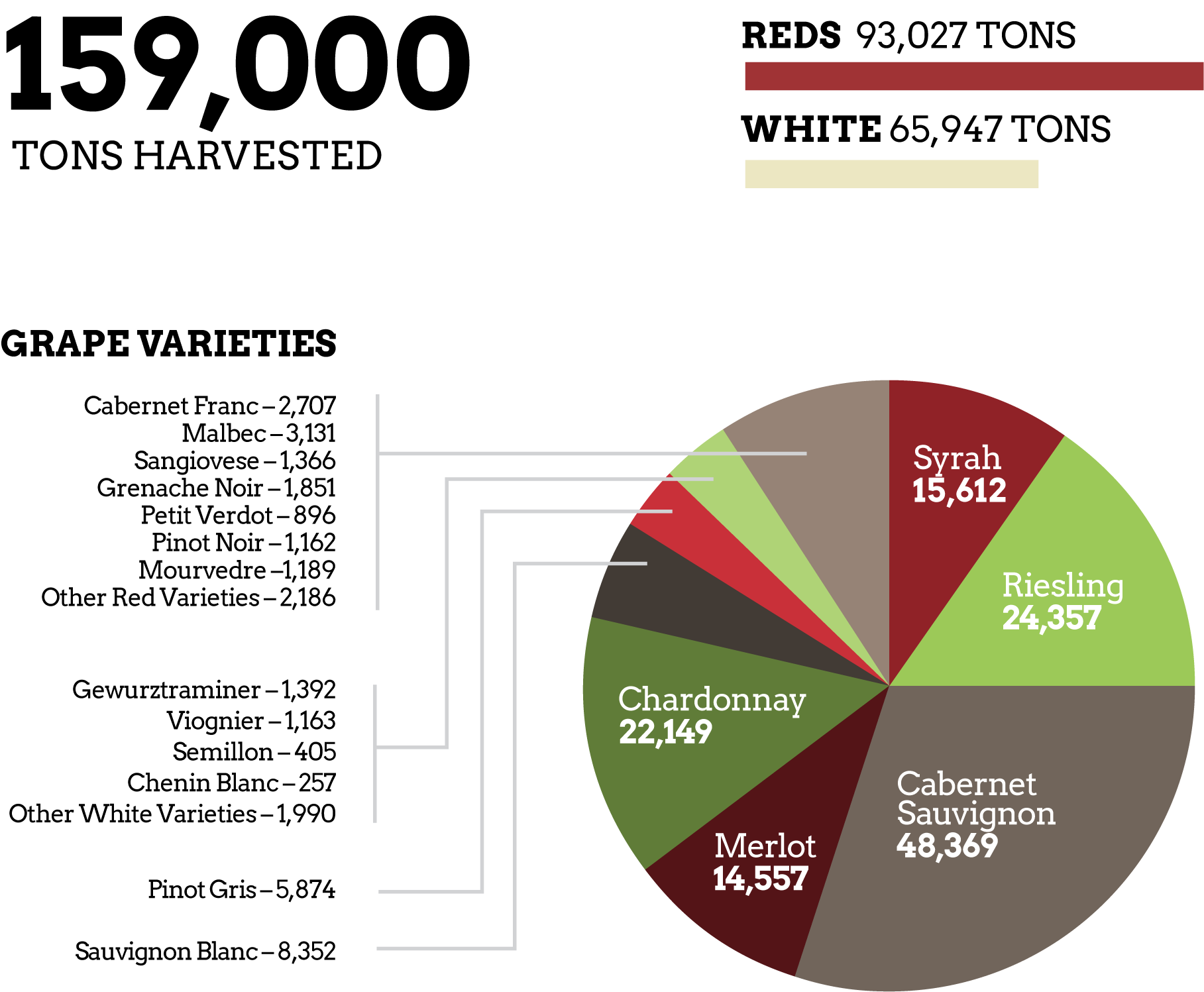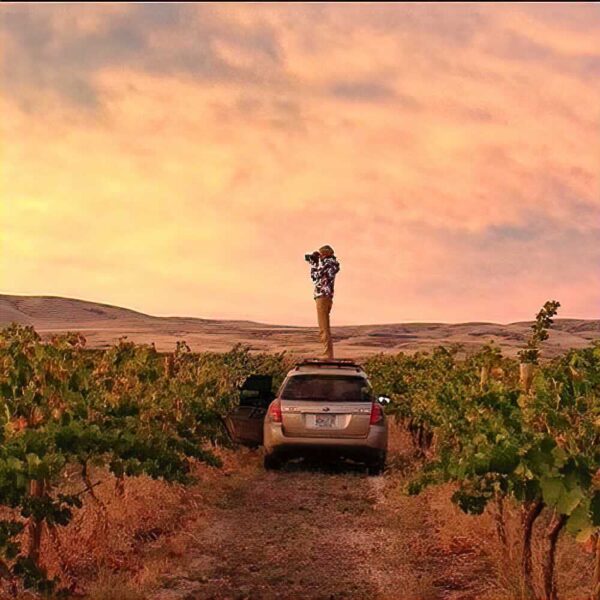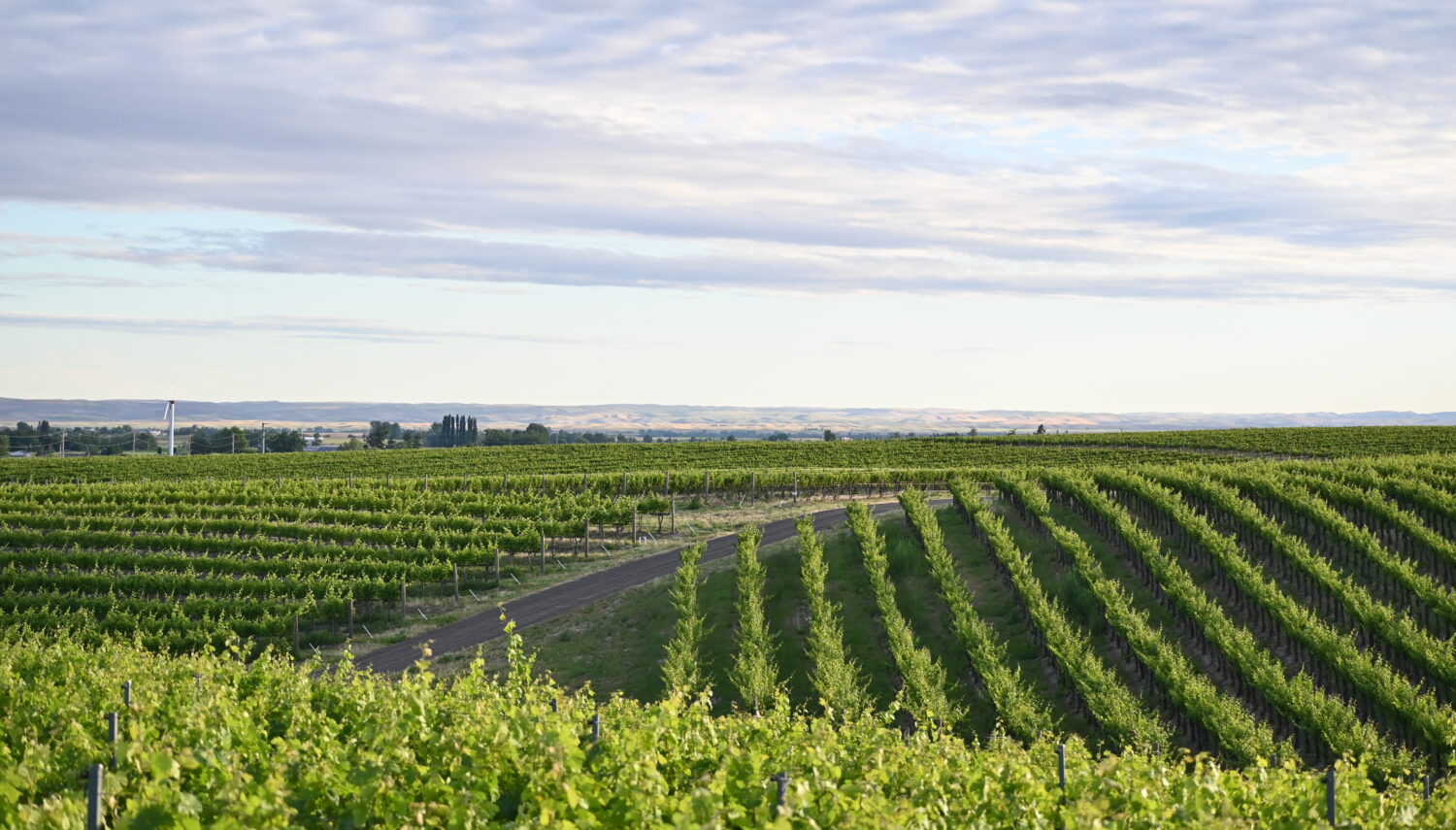Vintages, Varieties, and Variations
Every vintage is as predictable as the weather, which means each vintage will produce one-of-a-kind wines. This is, after all, the art and science of grape growing and winemaking: there is only so much you can control. Washington is variable. Grapes and vines just one mile apart in the same AVA have entirely different growing experiences, due to precipitation, temperature lows and highs, and more. And there’s a lot of variety in varieties. This is why a Syrah from one part of the state might taste lean with fresh acidity, and Syrah from a different area might taste earthy with lots of jammy fruit flavors.
Through research and experimentation, we’re constantly gaining knowledge and tools to help us anticipate and solve both longstanding and new issues. But as any winemaker will tell you, everything starts in the vineyard, and at the end of the day–we’re at the mercy of Mother Nature. It’s what makes wine, and winemaking, so fresh, challenging, and rewarding year after year.
Springtime in the vineyards. Ideally, conditions include gradually rising but cool temperatures to promote mid-spring vine and leaf bud burst, rain to saturate the ground for resources during the dry summer months, and leaf development to induce photosynthesis for more energy to grow the vine. Late spring will bring flowering as temperatures warm with some rain/irrigation needed for humidity/water levels necessary. In the summer time, we hope for gradual, even rising temperatures to promote grape development and lead to normal veraison, increasing sunlight hours to provide photosynthetic energy from the canopy to produce sugars, periodic small amounts of rain (rare but welcome), diurnal temperature variation to ensure balancing acid levels remain high, and medium level winds to control pests/fungal diseases. During harvest season, ideal conditions include gradually cooling temperatures to retain acids and allow for phenolic maturation without sugar accumulation, lack of rain to ensure there is no dilution to grapes during picking, and medium level winds to control pests/fungal diseases. In the wintertime, ideal conditions include cold temperatures to promote full dormancy, which allows the vines to store energy in the form of carbohydrates to utilize in spring budding, root growth for nutrient storing, kill off many potential colonies of vine pests.
Looking Back
What did 2023 look like? See the Harvest Report below, and if you’re curious to learn about our previous vintages, see the 30-year review.

30 Years in Review


